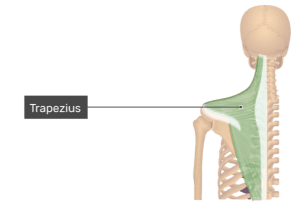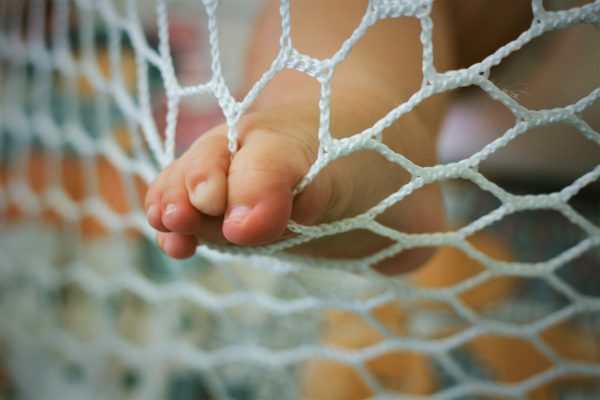Ever wondered how and why we can shrug our shoulders? Well you can thank your trapezius muscle for that!
The trapezius is a large, flat, triangle shaped superficial muscle that is divided into three parts: Superior, middle and inferior. The ‘traps’ as they are commonly called, are one of the most important muscles for assisting you with your movement and posture.
Where is it?
This muscle originates from the base of your skull (occipital bone), and spinous processes of C7 (you neck) all the way to the end of your thoracic spine T12 vertebrae.
The Trapezius then inserts into three areas: The spine of the scapula, lateral third of clavicle and the acromion.

What does it do?
This muscle assists with your scapular (shoulder blade) and neck movements. It is also important for stabilising these movements.
Why does it get sore?
There are a number of ways you can get a muscle spasms, pain, stiffness or a tired feeling in your traps:
- Posture
- Are you stressed?
- Trauma
- Compensating for another injury?
- Repetitive activities
- Over training
This can cause your muscles to have increased tension, shorten and lead to stress on the muscle leading to your symptoms. Exercises and stretches are important for strengthening and increasing the endurance of this important muscle. Here are two exercises for you to try at home.
Cat and Camel

How to: Start on your hands and knees with your back in a neutral position.
Arch your back, lifting your head up and pushing your tail bone out, making a dish with your spine.
Hold this position.
Next, bend your back up by tucking your head and tail bone in and pulling your belly button in towards your spine, making a curve through your back.
Hold this position, and then repeat.
Cervical Lateral Flexion Stretch

How to: Gently tilt your head to one side until you feel the stretch on the opposite side.
If it’s comfortable for you, apply some gentle pressure on the side of your head with one hand to increase the stretch.
Repeat on the opposite side.
– Casey Smith, Physiotherapist
If you would like to make an appointment with Casey, give one of our friendly team a call on 4724 0768 or Click Here, to book online.


